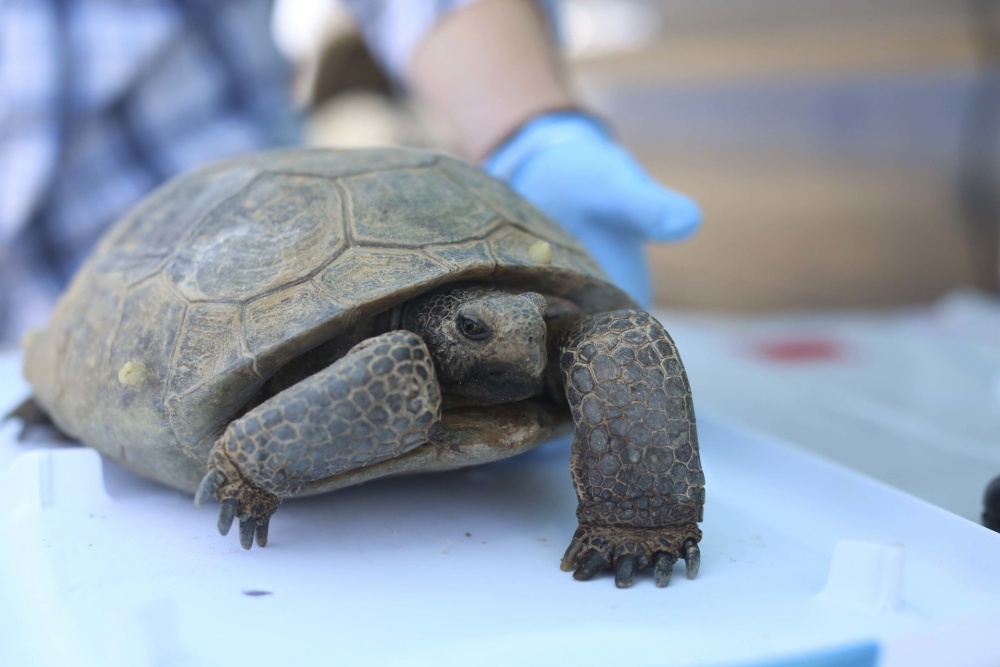US Marines Airlifted 1,100 Tortoises to New Desert Homes

The U.S. Marine Corps had an unusual mission this month: to airlift more than 1,000 desert tortoises across the Mojave Desert.
Desert tortoises are native to the southwestern desert, and a population of the reptiles had made their home near the U.S. Marine Corps Air Ground Combat Center in Twentynine Palms, California. However, plans to expand the Marines' training grounds for large-scale exercises with live fire would have put the tortoises at risk, so the military took on the massive task of relocating approximately 1,100 desert tortoises.
The two-week-long relocation effort was four years in the making, said Marine Corps Lt. Col. Timothy Pochop, director of natural resources and environmental affairs at the Air Ground Combat Center. [Images: 100-Year-Old Lonesome George Tortoise Goes on Exhibit]
"This effort has entailed almost four years' worth of surveys, with the environmental analysis dating back to 2008," Pochop said in a statement. "These surveys included health assessments, identifying all the animals [within the translocation] areas, placing radio transmitters on [the tortoises] and determining suitable locations in which to distribute them, to ensure survivorship and assimilation."
The Twentynine Palms Natural Resources and Environmental Affairs (NREA) division estimated that approximately 93 percent of the total tortoise population would be moved during the relocation. A team of biologists assessed all of the tortoises before they were placed in plastic bins and strapped into a helicopter for the journey to their new homes. Small tortoises were deemed unable to fend off predators, so they were admitted to the base's Tortoise Research and Captive Rearing Site, where they will be cared for until they are large enough to be relocated.
Each tortoise was assigned one of five identified areas of federal land deemed far enough away from the base, said Brian Henen, an ecologist at the NREA. The animals were matched to their new homes after extensive analysis, and were relocated to a precise location, nearly down to the square meter.
"The factors that went into selecting the recipient sites were based on several things," Henen said in the statement. "The first is what we think best represents the social structure from where they started, the second is the geographical characteristics of where they come from and the third is the temperature when we move them."
Sign up for the Live Science daily newsletter now
Get the world’s most fascinating discoveries delivered straight to your inbox.
For the next five years, the NREA will periodically check for any remaining desert tortoises near the base. Also, a 30-year monitoring plan is in place to check on the animals that have been relocated. This not only ensures the survival of the tortoises, according to Marine Corps officials, but also helps researchers understand the impact of relocation on the species.
Original article on Live Science.










